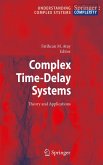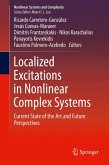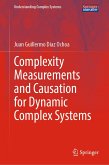Complex Systems lie at the heart of a variety of large-scale phenomena of great significance - global warming, ice ages, water, poverty, pandemics - and this text uses these case studies as motivations and contexts to explore complex systems and related topics of nonlinear dynamics and power-law statistics. Although detailed mathematical descriptions of these topics can be challenging, the consequences of a system being nonlinear, power-law, or complex are in fact quite accessible. This book blends a tutorial approach to the mathematical aspects of complex systems together with a complementary narrative on the global/ecological/societal implications of such systems. Nearly all engineering undergraduate courses focus on mathematics and systems which are small scale, linear, and Gaussian. Unfortunately there is not a single large-scale ecological or social phenomenon that is scalar, linear, and Gaussian. This book offers insights to better understand the large-scale problems facing the world and to realize that these cannot be solved by a single, narrow academic field or perspective. Instead, the book seeks to emphasize understanding, concepts, and ideas, in a way that is mathematically rigorous, so that the concepts do not feel vague, but not so technical that the mathematics get in the way. The book is intended for students in technical domains such as engineering, computer science, physics, mathematics, and environmental studies.
This second edition adds nine new examples, over 30 additional problems, 50 additional figures, and three new chapters offering a detailed study of system decoupling, extensive solutions to chapter problems, and a timely discussion on the complex systems challenges associated with COVID-19 and pandemics in general.
Dieser Download kann aus rechtlichen Gründen nur mit Rechnungsadresse in A, B, BG, CY, CZ, D, DK, EW, E, FIN, F, GR, HR, H, IRL, I, LT, L, LR, M, NL, PL, P, R, S, SLO, SK ausgeliefert werden.









